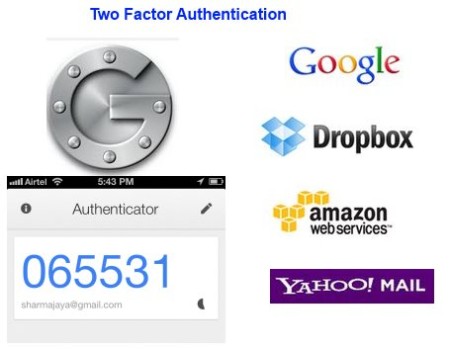These days, people store and share more of their personal information online than they ever have. Our E-mails, photos, videos, documents, music and our whole personalized profiles are stored online on massive servers, accessible to anyone. So it’s of paramount importance that all of this information be protected. Because almost everyone knows what happens when someone’s identity gets stolen.
That’s right, the repercussions can be devastating. So, how do we ensure our data, and our (online) identity is protected, and stays protected. Read on to find about a technology that just might be the solution for that.
What is Two Factor Authentication?
Two factor Authentication or 2FA, is a security enhancing technology that has been gaining steady popularity these days. 2FA is the most basic implementation of Multifactor Authentication. But, we will be sticking to 2FA for our discussion.
Two Factor Authentication is a security feature that significantly enhances the security and privacy of your online data. It achieves so by adding an extra layer of authentication to a user’s online account(s).
That’s right. Two factor Authentication basically works on the concept of duality. It works on the principle of two expressions “something you know” and “something you have” which refer to two distinct authentication methods that uniquely identify a user as the legitimate owner of an online account (say, an E-mail, Cloud storage service etc.). So, what do these two expressions mean? Keep reading!!
- Here, “SOMETHING YOU KNOW” refers to your authentication details that you know, or you remember. Clearly, this refers to your online account’s username and password. Both of these authenticating credentials are information that you “know.” This is the 1st factor of Authentication.
- Now comes the “SOMETHING YOU HAVE” part. This is the component that makes 2FA unique. Something you have refers to any information, or a source of information that “you and only you possess.” This is the 2nd factor of Authentication.
How does Two Factor Authentication work?
- It’s simple. First, a user is required to enter the information that he/she knows. Clearly, this refers to the authenticating credentials, that is, the username and password.
- Next, the second authenticating credential is generated for the user, by an app or a web service. This only works if the first set of credentials is proved to be authentic.
- When both of the credentials match the database, the unique user attached to the web service account is identified, and granted access.
How do modern services employ Two factor Authentication?
These days, almost all major web services like E-mail providers, Photo sharing sites, Cloud storage services employ 2FA. For the second authenticating credential, any of the following methods are applied.
- The second authenticating credential is sent to the user’s mobile device via a text message. This is usually a short numeric or alphanumeric code valid only for a single use.
- A dedicated mobile application (mainly in smartphones) is tied to the user’s account, and generates random authentication codes to be entered. This helps whenever the cellular service is unreliable.
- The second authenticating credential is sent to the user’s secondary E-mail address, or it’s simply the unique answer to a secret question that only the legitimate user possesses. Although this method is not so popular.
So how does 2FA protect your online information?
Two factor authentication almost guarantees the safety of your online data. This is because of the following fact. Let’s assume your primary authenticating credentials (username and password) are compromised. Without 2FA, you can assume that your information can be accessed by someone else. But with Two Factor authentication enabled, you know that your account cannot be accessed without passing through the second stage of authentication, which involves accessing information, that only you possess or more specifically, is accessible through a medium that only you can have access to. Hence, your account stays secure.
Conclusion
We share and store more information online that we’ve ever done. With such a massive amount of personal data online, ensuring it’s security becomes paramount. And with most of the people not choosing passwords strong enough, and thus the first layer being susceptible to breach, 2FA becomes a godsend. No wonder it has become rapidly popular in the recent past. It ensures that our private information remains accessible to only the ones we decide to share it with, and not just anyone else.
What do you guys think about 2FA? Do you use it with the web services you use? Do share your experiences and thoughts in the comments below.
See also: ILFS explains how to enable Two Factor Authentication on Major Web Services. Check out the links below!!
